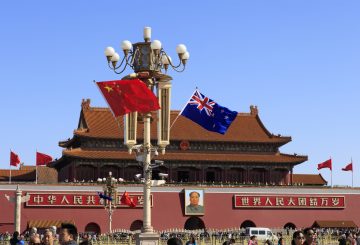Người giành huy chương vàng người Úc Grant Hackett có sự tham gia của đồng nghiệp người Úc Kieren Perkins, người đã giành huy chương bạc, và người giành huy chương đồng Chris Thompson đến từ Hoa Kỳ sau trận chung kết 1500m tự do nam tại Thế vận hội Olympic Sydney 2000. Sự kiện diễn ra vào ngày 23 tháng 9 năm 2000, tại Trung tâm Thủy sinh Quốc tế Sydney.
Chính phủ Úc gần đây đã công bố thêm 300 triệu đô la NZ tài trợ cho thể thao trong hai năm tới. Động thái này nhằm chuẩn bị cho thành công khi Úc đăng cai Thế vận hội lần thứ ba tại Brisbane vào năm 2032. Thủ tướng Anthony Albanese tuyên bố tài trợ bổ sung tại Canberra, sẽ tăng tổng tài trợ của chính phủ cho thể thao lên 530 triệu đô la NZ trong hai năm tới, theo Ủy ban Thể thao Úc (ASC).
Hơn 18 triệu đô la Úc trong số tiền tài trợ bổ sung sẽ được phân bổ cho Tài trợ Hỗ trợ Đầu tư Vận động viên Trực tiếp (DAIS). Chương trình này hỗ trợ các vận động viên với chi phí sinh hoạt trong khi họ đang tập luyện. Chủ tịch Ủy ban Olympic Úc Ian Chesterman nhấn mạnh tầm quan trọng của khoản tài trợ này, nói rằng một Thế vận hội sân nhà thành công đòi hỏi một đội chủ nhà thành công.
Sự gia tăng tài trợ của DAIS sẽ giúp nhiều vận động viên hơn và mang lại cho họ sự tự tin để tập trung vào việc đào tạo để đại diện cho Úc trên toàn thế giới. Chesterman cảm ơn thủ tướng vì cam kết hỗ trợ thể thao và vận động viên trong nước. Ông bày tỏ sự tự tin rằng đội tuyển Úc sẽ khiến quốc gia tự hào trong Thế vận hội Paris sắp tới và hơn thế nữa.
Thông báo này tiếp nối cam kết gần đây của chính phủ trị giá 270 triệu đô la New Zealand để tân trang lại Viện Thể thao Úc (AIS) ở Canberra. AIS đã dẫn đầu toàn cầu về khoa học thể thao và đào tạo vận động viên, giúp Úc vượt trội trong Thế vận hội và các cuộc thi quốc tế khác. Kieren Perkins, cựu vận động viên bơi lội vô địch Olympic và hiện là giám đốc điều hành của ASC và AIS, cảm ơn chính phủ Úc vì cam kết hỗ trợ thể thao và cung cấp cho các vận động viên các nguồn lực để thành công.





























































